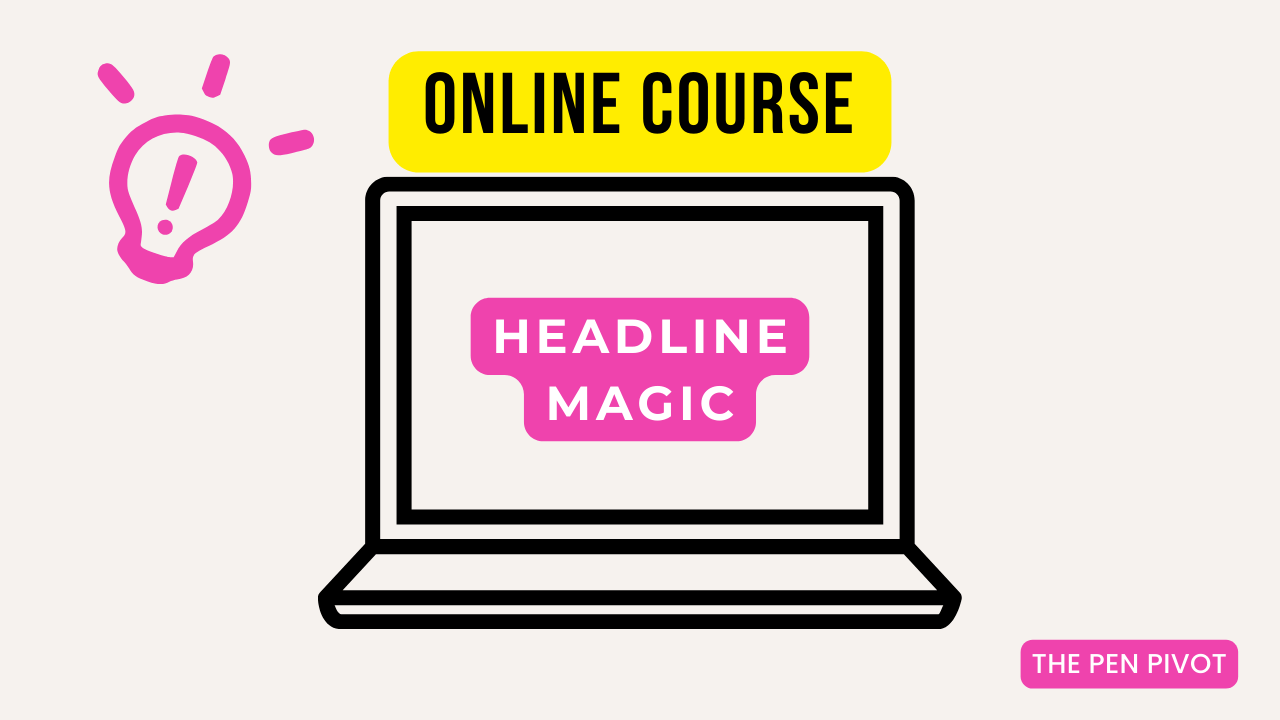- The Pen Pivot
- Posts
- Get Your Emails Opened With This 1 Little Tweak To The Subject Line
Get Your Emails Opened With This 1 Little Tweak To The Subject Line

Welcome to The Pen Pivot!
In this email:
🔧 Creator Tool Of The Day:
A keyword research tool that’s actually easy to use (and doesn’t break the bank). Use it for SEO, content ideas, and competitor research.
💡 Psychology-Backed Content Trick:
A dead-simple email subject line trick to increase open rates.
🕛️ Time is Running Out:
A reminder that our course “Headline Magic” is launching in 72 hours and will double in price as soon as it does!
🔧 tool of the day
🔧 Keywords Everywhere
(Not sponsored, just a recommendation)
The Google search page is a goldmine of content ideas.
The keywords give you a glimpse into what people want:
Desires
Aspirations
Solutions
The trouble is, most keyword research tools are expensive or complicated to use.
Keywords Everywhere is a much more affordable tool that gives you estimates for keyword search volumes…
On Google AND YouTube search page itself - a seamless experience.
Even content creators that aren’t SEO-focused would benefit from using it for content ideas and competitor research.
🖱️
Get Your Emails Opened With This 1 Little Tweak To The Subject Line
The newsletter you’re reading right now has over 7K subscribers and an average open rate of 52%.
Not to toot my own horn, but that’s a stellar open rate.
The funny thing is, the newsletter struggled with low/average open rates for a long time.
If you write email content and you’re in a similar position, here’s are the secrets:
List-scrubbing does play a role, as well as having (what I hope is) good content-market fit 😉.
But the biggest difference came from writing better subject lines.
I’ve experimented (i.e. A/B tested) a bunch of different subject lines and identified a little tweak that consistently gets emails opened more.
The tweak?
Adding causal language.
Here’s what it is and how to use it to boost your open rates.
How To Add Causal Language To An Email Subject Line
💡 “Causal language” is when words or phrases suggest a “cause-and-effect” relationship.
I.e. when one action or event directly leads to, influences, or results in another action or event.
Let’s go through some headline examples that use causal language, before going through how to use it in an email subject line.
“This 3-Step Morning Routine Boosts Daily Productivity By 24%”
Here, the headline implies the direct impact of a morning routine on productivity levels.
“5 Easy Home Adjustments That Reduce Energy Bills”
Here, the headline promises that specific home adjustments have a direct impact on energy bills.
People are drawn to understanding how one action can lead to a specific result.
Especially if it promises to solve a problem, improve their life, or satisfy their curiosity.
Causal language also offers clarity and specificity.
This is appealing and stands out in a sea of vague and ambiguous headlines/email subject lines.
When writing email subject lines, you’ve got fewer words to work with.
So it’s usually best to split the cause and effect across the subject line and the preview text.
Here are some (made up) examples to illustrate this:
Subject Line: Transform Your Bedroom Decor (cause)
Preview Text: Using A 3-Step Upgrade (effect)
Subject Line: 2 New Privacy Laws Set In Today (cause)
Preview Text: What It Means For Your Site (effect)
Subject Line: $2B Stimulus Predicted (cause)
Preview Text: 3 Key Impacts On Growth (effect)
Note how the last two emails are news-related, while the first one is more of a how-to piece.
Causal language can be used in many different types of content.
All you need to do is highlight how a certain action or event will directly impact another action or event relevant to the audience.
But remember, the more specific you can make the subject line, the better.
Try to use specific figures and refer to specific items whenever possible.
People want to know that the benefit they’ll receive from reading the email will be concrete.
Not abstract or wishy-washy.
Disclaimer:
There’s a good chance this technique will work in your niche.
But there’s no guarantee - it needs to be tested.
After all, every audience is different.
Test it out.
Experiment with different styles and formats until you start to spot a pattern.
Identify which emails get opened and which ones get ignored.
If You Found This Useful (Or Not So Useful)…
Please let me know using the poll below.
This is the first newsletter I’ve written on email marketing and I’m not sure if you would want more on the topic.
If you do, I’ve got plenty more tricks and hacks to share.
Any feedback would be appreciated!
🕛️ time is running out
Our course Headline Magic is launching in 72 hours and will double in price when it does!

If you’re interested and want to take advantage of the ridiculous pre-launch discount we’ve got going at the moment, you should check it out.
You’ll learn a tonne of dead-simple techniques for writing headlines that effortlessly get more clicks (and views) than your competitors.
Remember, if the headline doesn’t get clicked, the content doesn’t get read or viewed.
(No matter how long you spent making it).
Did you find today's newsletter content valuable? |
And that’s all for today!
Dil, The Pen Pivot
